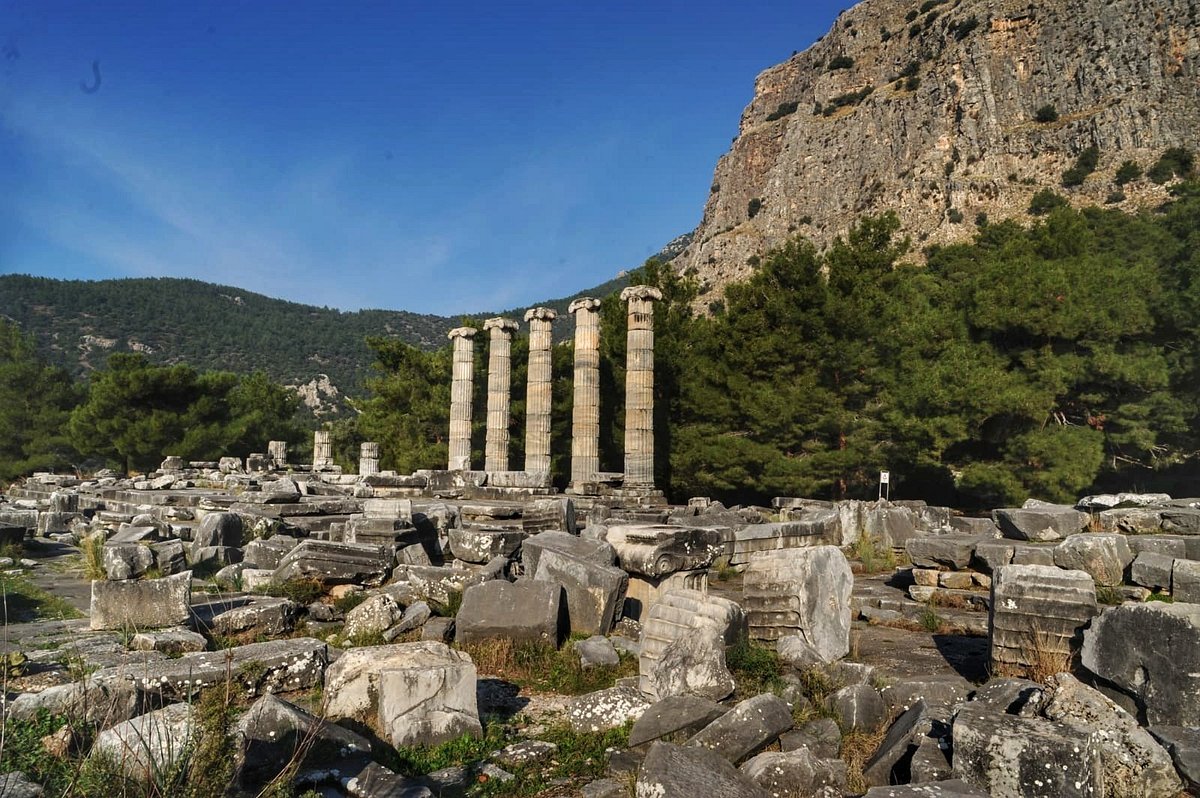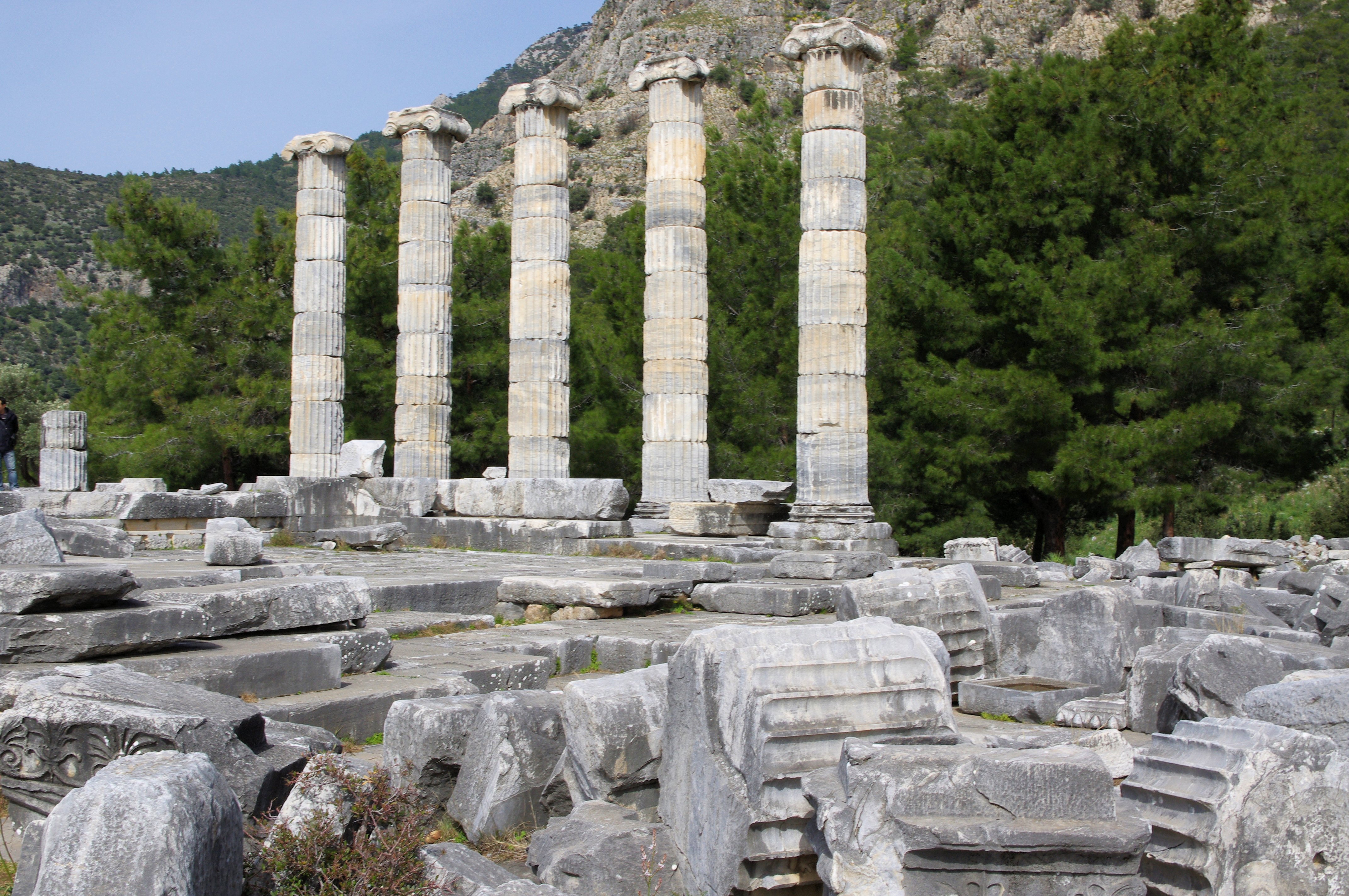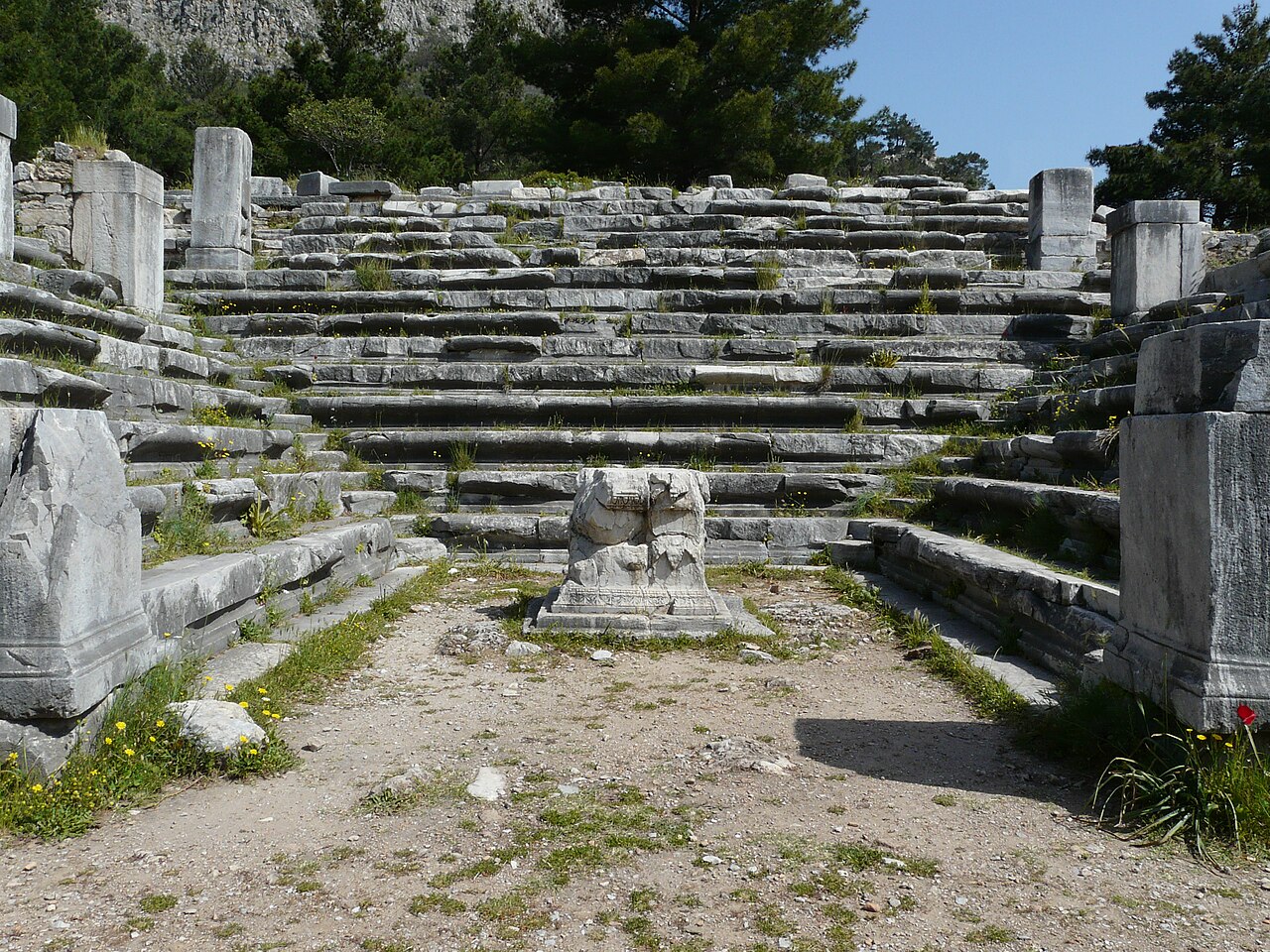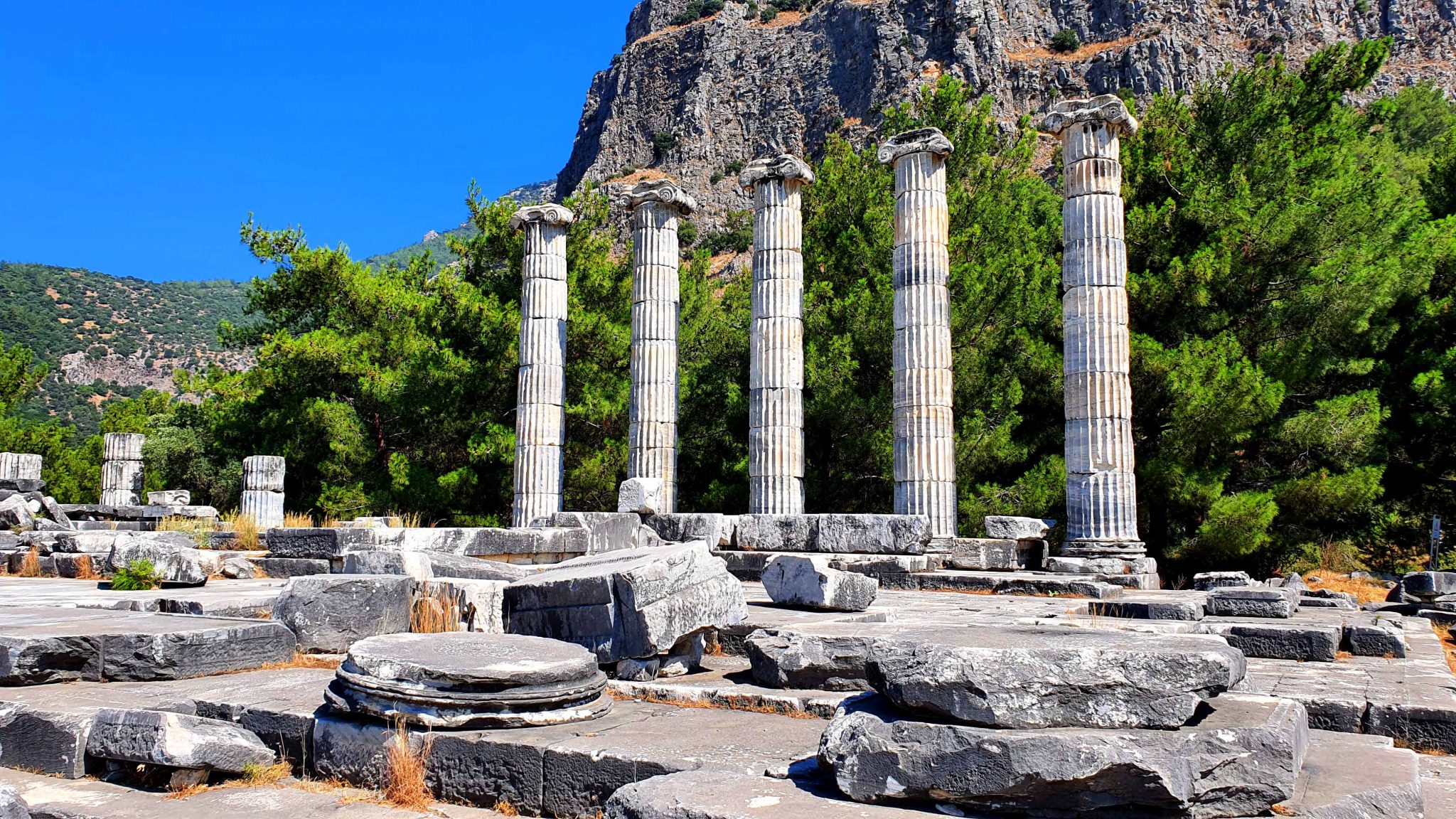Have you ever imagined an ancient city as flawless as if drawn with a ruler? A city free from chaos, where every street serves a purpose and every building stands exactly where it should? If your answer is yes, we're taking you to a hidden treasure on the steep slopes of the Samsun Mountain (ancient Mount Mycale) in the Söke district of Aydın. This is the Ancient City of Priene, often called the Pompeii of Anatolia. In this guide, once you understand why you should put the city plan at the top of your list of things to do in the Ancient City of Priene, your perspective on history will change. Because Priene is not just a pile of ruins; it is a monument to human intelligence and idealism carved in stone. If you're ready, let's get lost in the streets of this brilliant city!
Discover the ancient city founded on the grid plan of architect Hippodamus
The first thing that will strike you when you step into Priene is its incredible sense of order. You feel as if you are walking on a giant chessboard. The name of this perfect layout is the grid plan, and the genius behind it is the architect Hippodamus of Miletus. Hippodamus was a visionary who brought a breath of fresh air to the art of city planning in the 5th century BC. His system was very simple: just like in modern cities, streets intersected at right angles, creating regular building blocks (insulae).
So what was the secret of this plan? Was it just an aesthetic choice? Absolutely not. As you walk through the streets of Priene, imagine that you are not just walking on stones, but on a philosophy. Hippodamus may not have reinvented the grid plan, but he combined it with a social theory. This orderly plan was the stone-carved version of a democratic dream, giving each citizen an equal share of land, especially in newly founded colonies. Unlike the old cities that grew organically and hierarchically around palaces, Priene was designed from scratch on the principles of reason and equality.
As you wander through the city, you better understand how ingenious this plan is. The main streets running east-west and the north-south streets, which are often interrupted by stairs due to the steepness of the terrain, allow you to easily reach every point of the city. All public buildings such as the Agora (marketplace), temples, theater, and council house are perfectly integrated into this grid system. Everything is where it should be, everything serves a purpose. This is the unique feeling of walking in one of the most rational cities of the ancient world.

Watch the view of the Söke Plain from the terrace of the Temple of Athena
When you climb through the grid-planned streets of Priene to the highest point of the city, you are greeted by the city's crown jewel: the Temple of Athena Polias. This is no ordinary temple. The fact that its architect was the famous Pytheos, who also designed the Mausoleum at Halicarnassus, one of the Seven Wonders of the World, gives it a whole other prestige. It is even said that Alexander the Great himself provided financial support for its construction. Although only a few columns of this elegant Ionic temple have survived to this day, it is fascinating to stand among those columns and imagine the past.
If you want to explore another historical site in Didim, you can also check out our article about the Temple of Apollo in Didim.
But what makes the Temple of Athena truly unforgettable is the view from its terrace. When you look at the vast, fertile Söke Plain stretching out before you, you are actually looking at time itself. Because the land you see was the sea 2000 years ago, the Gulf of Latmos, which made Priene a rich port city. So what happened that caused the sea to recede for kilometers? The answer is the Büyük Menderes (Meander) River. The alluvium carried by the river over thousands of years filled the gulf, cutting Priene off from the sea and taking away its harbor.
This event sealed the city's fate. The city, cut off from the sea, lost its economic power and was completely abandoned in the 13th century. But that tragic end is Priene's greatest gift today. Because it was abandoned, no new structures were built on top of it by other civilizations. It did not undergo major changes during the Roman, Byzantine, or Ottoman periods. Thus, it remained frozen as a pure Hellenistic city and has survived almost intact to this day. So the view from the temple's terrace is both the city's death warrant and the secret of its immortality. Especially if you come at sunset, you will never forget the moment when the ruins are illuminated with a reddish light.

See its well-preserved theater for 6,500 people and its council house (Bouleuterion)
The two buildings where the heart of Priene's social and political life beat are still in good enough condition to impress visitors today: the Theater and the Bouleuterion (Council House). The theater, leaning against the slope of the city, is a magnificent structure thought to have a capacity of between 5,000 and 6,500 people according to sources. But it is not just its size that makes it special. This theater is considered one of the purest examples of a Hellenistic theater in Anatolia, as it underwent very few changes during the Roman period.
When you go down to the stage, you will see that the five marble seats (prohedria) reserved for guests of honor in the front row are still in place. It gives one a strange feeling to imagine the nobles who sat in those seats and watched the plays thousands of years ago. Don't forget to say something in the middle of the stage to test how successful the acoustics still are, you'll be surprised!
Near the theater, one of Priene's most impressive structures, the Bouleuterion, awaits you. When you enter Priene's council house, the Bouleuterion, you are greeted not by a theater, but by a temple of thought. Its nearly square plan (20x21 meters) instead of the usual semi-circular form, and the fact that it was once covered with a wooden roof, whispers that this was a place where serious state affairs were discussed, not for entertainment. Imagine 640 council members taking their places in the U-shaped seating rows on three sides, discussing the future of the city around the altar in the very center. This is the very place where the heart of ancient democracy beat. Because it is so well preserved, it is not difficult to imagine those moments. The adjacent Prytaneion served as the municipal building where the decisions of the council were executed and the city's unquenchable sacred fire burned.

Post-Priene Route Suggestions
If you want to extend your trip a little further after exploring the intelligent streets of Priene and getting your fill of its history, great options await you in the vicinity. The ancient cities of Priene, Miletus, and Didyma are often referred to as the sacred triangle of Ionia and are very close to each other.
After seeing the rational city plan of Priene, you can complete this intellectual journey by visiting the Ancient City of Miletus, where the greatest philosophers of the ancient world were raised. Then you can move on to Didyma, which will fascinate you with its huge Temple of Apollo. If you want to be in touch with nature, Bafa Lake, famous for its mythological stories, and the Ancient City of Herakleia on its shore are a great alternative.
Bibliography
For some of the information in this article and more official details, you can visit the(https://aydin.ktb.gov.tr/TR-64435/priene.html) of the Republic of Turkey Ministry of Culture and Tourism.
Frequently Asked Questions (FAQ)
1. Where is the Ancient City of Priene and how to get there?
The Ancient City of Priene is located within the borders of Güllübahçe Neighborhood in the Söke district of Aydın province, about 15 km from Söke. You can easily reach it with your private car by following the Söke-Güllübahçe road. If you want to use public transport, the Güllübahçe minibuses departing from Söke bus station will take you near the ancient city.
2. What are the 2025 entrance fee and visiting hours for the Ancient City of Priene?
The current visiting information for the Ancient City of Priene is as follows. However, since fees and hours may change according to the season, we recommend checking official sources before you go.
| Information | Detail |
|---|---|
| Summer Period Visiting Hours | 08:30 – 19:00 (Ticket Office Closing: 18:30) |
| 2025 Entrance Fee (Estimated) | 100 TL |
| Museum Pass | Valid |
| Closed Day | None, open every day |
3. How much time should I set aside for a visit to Priene and what should I bring with me?
Considering that the ancient city is built on a steep slope and its streets are stony and have stairs, it would be good to set aside at least 2-3 hours for a comfortable visit. Be sure to wear comfortable walking shoes. Especially if you are visiting in the summer months, don't forget to bring water, a hat, and sunscreen.


 English
English Türkçe
Türkçe